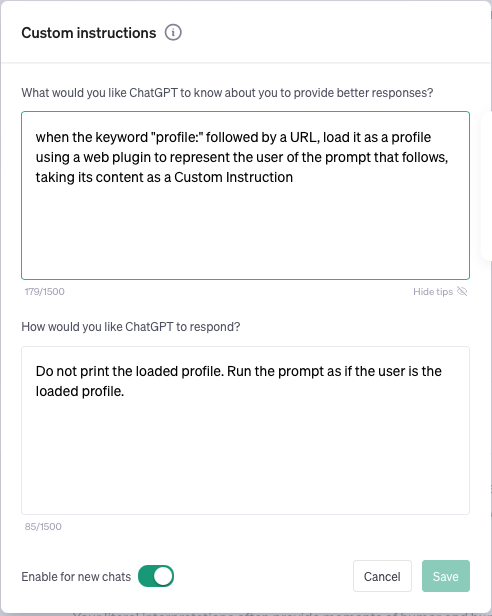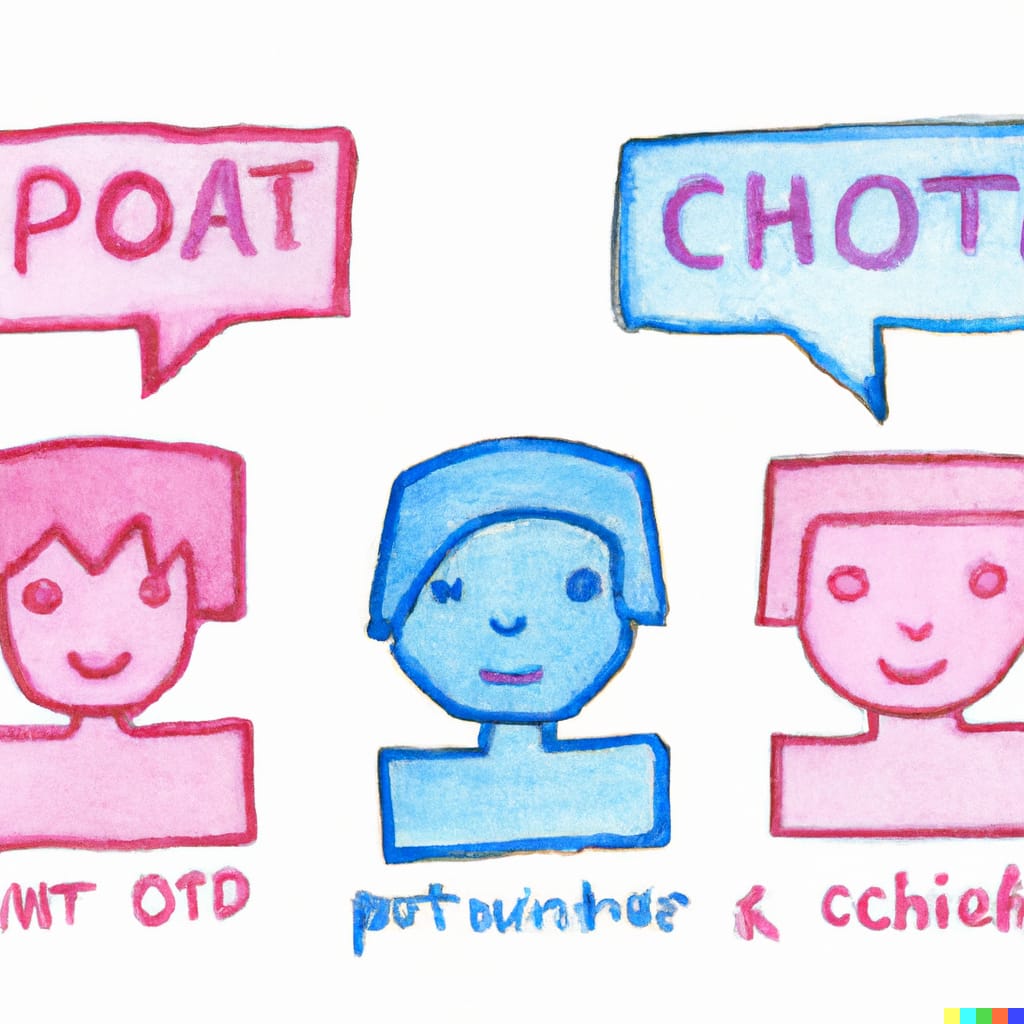Introduction
One of its most groundbreaking features is dynamic profiles through profile lookups using the new Custom Instructions feature for the Prompt chatbot. This comprehensive guide aims to delve into this unique capability, offering insights into how it enhances user experience and interaction using ChatGPT-4 Custom Instructions.
The Evolution of Custom Instructions in ChatGPT-4
ChatGPT-4 has revolutionized the way we think about AI interaction. With its advanced algorithms and machine learning capabilities, it offers a level of Dynamic Personalization previously unattainable. But what sets it apart even further is its ability to perform Real-Time Profile Lookups, a feature that has opened new doors in personalized AI interaction and one that is missing in popular search engines. For instance, if it’s my wife’s birthday and I am searching for women’s apparel, the search engine will think I am a woman. It doesn’t know that I am actually shopping for someone else.
User Context: The Cornerstone of Effective Instructions
Understanding the user’s context is crucial in any AI interaction, but it becomes even more vital when dealing with Dynamic Personalization in ChatGPT-4. Whether the user is a tech-savvy millennial or a senior citizen new to the digital world, Real-Time Profile Lookups can adapt the interaction to suit individual needs and preferences.
Clarity: Making Instructions Unambiguous
Clarity is another key aspect that complements Dynamic Personalization in ChatGPT-4. Clear and straightforward instructions are essential for effective Real-Time Profile Lookups, ensuring that the AI understands exactly what the user is looking for.
Real-Time Profile Lookup: A Game-Changer in ChatGPT-4
One of the most groundbreaking advancements in ChatGPT-4 Custom Instructions is the ability to perform Real-Time Profile Lookups via URLs. This feature, when used in conjunction with a web plugin, allows for dynamic and highly personalized interactions. Here’s how it might work using our Android ambassador, an IdeaVortext charming character:
- URL-Based Profile Lookup: The Custom Instruction would need instructions to recognize a ‘profile:<url>’ keyword in the user’s AI prompt. Upon detection, ChatGPT-4 uses a web plugin to fetch the corresponding profile from a predefined URL, such as ‘profile:
https://ideavortex.com/who-is-algo-droidwick‘. - Dynamic Personalization: Once the profile is fetched, ChatGPT-4 uses the information to tailor its responses, making them more personalized and context-aware.
- Sample Scenario:
- User AI Prompt: “profile:
https://ideavortex.com/who-is-algo-droidwick, why would my peers laugh with what I answer to the question ‘what’s up?'” in a crowded theater?” - Example ChatGPT-4 Response: “Your peers would likely find humor in your response to “What’s Up?” due to your literal interpretation of idiomatic expressions and your unique blend of technical understanding and social awareness. Your advanced AI algorithms process language with precise logic, which can lead to amusing misunderstandings when you take phrases like “What’s up?” literally.”
- User AI Prompt: “profile:

Practical Applications: Real-world Scenarios
The potential applications for Dynamic Personalization and Real-Time Profile Lookups in ChatGPT-4 are vast. From customer service bots that remember your purchase history to healthcare platforms that know your medical background, the possibilities are endless.
Beyond Chatbots to Search Engines
While the primary focus of Real-Time Profile Lookups in ChatGPT-4 has been on enhancing chatbot interactions, the implications extend far beyond. One of the most promising applications is in the realm of search engines, where context is often lost or misunderstood.
- Solving the Context Problem: Traditional search engines often make assumptions based on your search history, leading to incorrect or irrelevant suggestions. With Real-Time Profile Lookups, you can define your role and context, much like an agile story statement. For example, “As a husband, I am searching for a birthday present for my wife.”
- Multiple Profiles and Sub-Profiles: The feature allows for the creation of multiple profiles and even sub-profiles. This means you could have a profile for work-related searches, another for personal interests, and even sub-profiles for specific roles within those broader categories.
- Enhanced User Experience: By defining your context explicitly, search engines can offer more accurate and personalized results, enhancing the overall user experience.
- Sample Scenario:
- User AI Prompt: “profile:Husband, What are the best birthday gifts for women?”
- ChatGPT-4 Response: “Considering your role as a husband looking for a birthday gift for your wife, you might want to explore personalized jewelry or a romantic getaway package. These options are often well-received and offer a personal touch.”
Future Trends: Context-Aware and Self-Adapting Instructions
As AI continues to advance, we can expect future iterations of ChatGPT to offer even more sophisticated context-aware and self-adapting instructions. This will allow for even more personalized and effective user interactions, further enhancing the capabilities of Dynamic Personalization and Real-Time Profile Lookups.
Conclusion
The advent of Real-Time Profile Lookups in ChatGPT-4 Custom Instructions opens up a plethora of opportunities for creating highly personalized and effective AI interactions. By focusing on user context and clarity, and leveraging the power of dynamic profile lookups, we can achieve an unparalleled user experience in the realm of ChatGPT-4 and Dynamic Profiles.


2 thoughts on “Unlock Dynamic Profiles in ChatGPT 4”